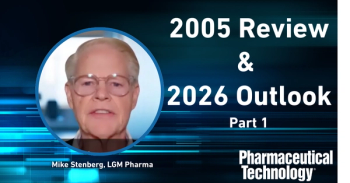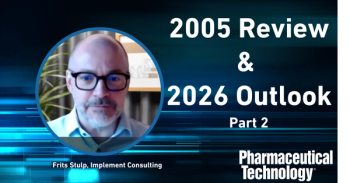
Pharmaceutical Technology Europe
- Pharmaceutical Technology Europe-08-01-2019
- Volume 31
- Issue 8
One Small Step for Man, One Giant Leap for Pharma Regulators
European Union regulators have taken a significant step towards resolving some of the major supply-chain difficulties behind medicine shortages.
The European Medicines Agency (EMA) and Heads of Medicines Agencies (HMA) representing the regulatory agencies of European Union member states-or national competent authorities (NCAs)-issued in early July two guidance documents (1,2). The documents address the detection and notification of shortages (1) and good practice in public communications on medicines availability (2).
But the EU and its member states still have a long way to go before they can sort out what the pharmaceutical industry considers to be key issues at the core of the medicines scarcities, such as low prices and delays in deciding public sector reimbursement levels.
An area of great concern
Dealing with deficiencies in medicines availability was highlighted as an important objective at a meeting of EU leaders in Romania in May 2019 on the future of the Union (3). In a five-year strategy document drawn up in 2015 by the EU medicines agencies network comprising the EMA and NCAs, the issue was already being classified as “an area of great concern.”
The EU is likely to introduce new regulations to replace the 15–20-year-old rules governing shortages reporting and prevention, in which great importance is attached to free movement of medicines and competition. Now, precedence is being given to the interests of healthcare professionals and patients in combating scarcities. The EU and national governments are under pressure to take action because levels of insufficient supplies are worsening rather than improving (4).
In a survey of medicines scarcities in European hospitals performed in 2018 by the Brussels-based European Association of Hospital Pharmacists (EAHP), 92% of hospital pharmacists reported that shortages were a problem in their pharmacy, particularly in terms of delivering the best care to patients. This compared to 86% making a similar claim in 2014 (4).
“Such reports are alarming and demonstrate the urgent need to draft and implement corrective policies at all decision-making and professional levels across Europe,” said the EAHP in a position paper issued in June 2019 (4). “Multi-stakeholder action is urgently needed since only joint efforts can help diminish the impact of medicines shortages on patients.”
A major objective behind the two new guidance documents, drawn up by an EU task force on medicines availability mainly comprising the chairs and representatives of the EMA and NCAs, has been to encourage collaboration by harmonizing the process of prevention and management of shortages already being operated by the majority of EU states.
Defining the problem
A key feature of the guidance on detection and notification is the inclusion of a definition of a shortage (1). It is stated in the document: “An essential element to a harmonized approach for reporting and managing shortages is the use of a harmonized definition of a shortage. The lack of a common definition has meant that the detection and coordination of the management of shortages in the [European] Union has been inconsistent.”
Three years ago, a group of experts at the Geneva-based World Health Organization (WHO) trying to work out a suitable definition of a started with a selection of 56 definitions, which was whittled down to two, one covering the supply side and other the demand side (5).
The EU task force opted for a definition focused on demand (1), which reads: “A shortage of a medicinal product for human or veterinary use occurs when supply does not meet demand at a national level.”
In the WHO definition on the demand side a ‘shortage’ occurs when demand exceeds supply (5). But in its definition on the supply side (5), a ‘shortage’ takes place when the supply of medicines identified as being essential by a health system is considered to be “insufficient to meet public health and patient needs.” With the EU definition, the emphasis is on the demand of healthcare professionals and patients (1).
The new EU definition will replace or at least take precedence over a variety of different national definitions in the EU. Some of these definitions are based on length of time of the drugs unavailability. Norway, although not an EU member complies with EU rules as it is part of the European Economic Area, considers that unavailability for at least two weeks constitutes a shortage. In Belgium, it is an ‘uninterrupted period of four consecutive days’.
In France, a shortage occurs when a community or hospital pharmacy has been unable to make a drug available within 72 hours. But France also applies other definitions of shortages, like when a manufacturer is unable to produce a medicine or a distribution problem prevents the supply of a drug even though sufficient amounts of it have been manufactured.
The guidance places much of the onus for notifying shortages to the EMA or NCAs. MAHs should report not just current shortages but also impending or anticipated scarcities, which are expected to affect one or more EU states.
Shortages or potential ones to be reported would include those stemming from regulatory issues, such as defects revealed by good manufacturing practice (GMP) or good distribution practice (GDP) inspections, batch failures, and medicine recalls.
A proposed template in the guidance contains details such as risk assessments of the impact of shortages and suggested mitigation plans for dealing with the unavailability of products (1). The impact assessment would give information on potential alternative medicines. The report should also include estimates of current stocks in the supply chain and how much inventory will be available at the end of the shortage.
Continuous monitoring
The guidance expects MAHs to continuously monitor the supply and demand positions of their products with the help of regular communication with supply chain operators, such as contract manufacturers and wholesalers. In addition, they should watch out for signals of potential shortages from pharmacies, retailers, healthcare professionals, and patient groups.
Monitoring of contract manufacturers is considered important by the guidance because they may be producing drugs for a number of MAHs so that a production problem would impact more than one medicine. MAHs should be particularly vigilant with medicines that have no or only limited alternatives and with whom supply interruptions could threaten public health, according to the guidance (1). It warns that with these products NCAs may require MAHs to develop shortage prevention plans.
Although under existing EU legislation MAHs are required to notify impending shortages-such as those possibly caused by the withdrawal of products for commercial reasons-two months before the anticipated interruption in supplies, the guidance stresses that both current and expected shortages should be reported as early as possible (1): “Early shortage notification allows for better management of the shortage by the competent authority and stakeholders.”
Work of the task force
Since it was set up in 2016, much of the work of the task force so far has been directed at improving communications about shortages to healthcare professionals, patients, and the general public, which has culminated in the completion of the guidance on the subject.
Now with the publication of the guidance on detection and notification, the task force should be able to focus more on dealing with the shortages themselves and their avoidance. By the end of 2019, the task force is due to develop metrics for measuring the severity of shortages. It is also working on ways of encouraging best practices among stakeholders on the prevention of shortages.
The effectiveness of the task force will be tested by Brexit in which it has been given a central role in coordinating actions between member states, EMA, and the European Commission, the EU’s Brussels-based executive.
The long-delayed departure of the United Kingdom from the EU, which now seems likely to take place before the end of the year, possibly without a withdrawal agreement between the two parties, could cause serious drug shortages because the UK is one of Europe’s leading medicines producers. The EU’s newly emerging strategy of tackling shortages through collaboration and close supply chain cooperation will be on trial in the immediate post-Brexit period.
Packaging regulations
The introduction in February 2019 of an EU regulation on pharmaceutical packaging (6), which should help streamline medicines supply chains from the production plant to the pharmacy dispensing point, has highlighted the difficulties of gaining a uniform response to efficiency-raising initiatives.
The regulation, part of the Falsified Medicines Directive (FMD), requires the identification of individual medicine packs through the use of 2D barcodes whose data can be verified by a pharmacist with a scanner at a dispensing point connected to a central data bank.
A dual objective behind the regulation is to combat medicines counterfeiting and to considerably improve the tracking and tracing of individual drugs through the distribution chain so that at times of shortages spare stocks can be quickly located. Yet, according to figures issued in July 2019 (7), 40% of manufacturers as well as one quarter of other supply chain actors such as pharmacies, hospitals, and wholesalers have not yet connected to the pack verification system.
The figures were published by the Belgian-based European Medicines Verification Organization, a joint industry and pharmacists body, which runs the pack checking scheme. It has urged NCAs to starting enforcing compliance with the regulation.
The troubles with the implementation of the FMD regulations indicate that resolution of Europe’s medicines supplies difficulties is going to be a slow-moving process and will need a lot of commitment by individual companies and organizations.
References
1. EMA and HMA, Guidance on Detection and Notification of Shortages of Medicinal Products for Marketing Authorization Holders (MAHs) in the Union (EEA)(Brussels, 1 July 2019).
2. EMA and HMA, Good Practice Guidance for Communication to the Public on Medicines’ Availability Issues (Brussels, 4 July 2019).
3. EC, “Preparing for a More United, Stronger, More Democratic Union in an Increasingly Uncertain World” (Brussels, May 2019).
4. European Association of Hospital Pharmacists (EAHP), “EAHP Position Paper on Medicines Shortages” (Brussels, June 2019).
5. WHO, “Meeting Report: Technical Definitions of Shortages and Stockouts of Medicines and Vaccines” (Geneva, October 2016).
6. EU, Delegated Regulation 2016/161 Laying Down Detailed Rules for the Safety Features Appearing on the Packaging of Medicinal Products for Human Use (Brussels, 2 October 2015).
7. EMVO, “EMVO Stakeholders’ Consideration on Enforcement and Inspections Under the Falsified Medicines Directive 2011/61/EU (FMD) and its Delegated Regulation EU 2016/161 (DR)” (Brussels, 10 July 2019).
Article Details
Pharmaceutical Technology Europe
Vol. 31, No. 8
July 2019
Pages: 10–11
Citation
When referring to this article, please cite it as S. Milmo, “One Small Step for Man, One Giant Leap for Pharma Regulators,” Pharmaceutical Technology Europe 31 (8) 2019.
Articles in this issue
over 6 years ago
Realizing the Potential of Vaccinesover 6 years ago
Celebrating in Styleover 6 years ago
The CDMO Evolutionover 6 years ago
Niche APIs By Popular Demandover 6 years ago
Partnering Up for Successover 6 years ago
In Safe Handsover 6 years ago
Regulatory Harmonyover 6 years ago
Tooling Up for Pharmaover 6 years ago
Raise a Glass to Pharma Vialsover 6 years ago
Analysis and Purification: Instrumental to BioPharmaNewsletter
Get the essential updates shaping the future of pharma manufacturing and compliance—subscribe today to Pharmaceutical Technology and never miss a breakthrough.




